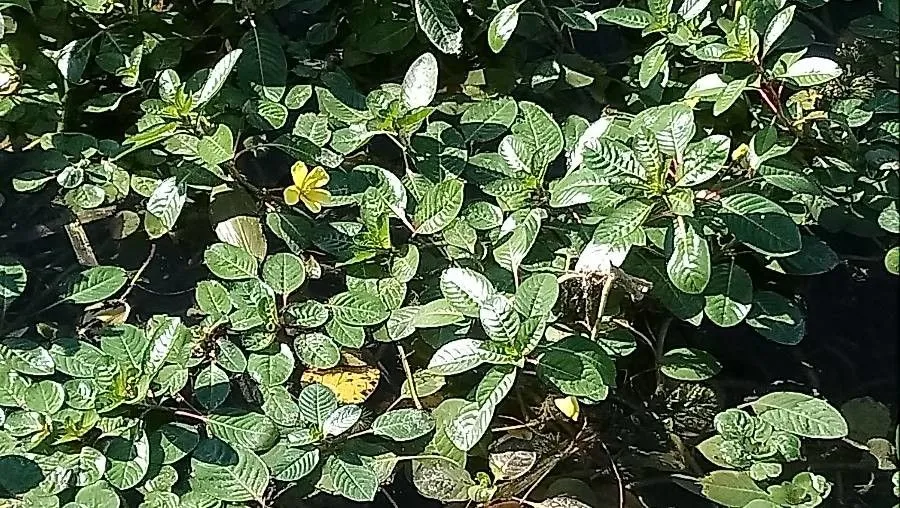
Author: (Kunth) P.H.Raven
Bibliography: Reinwardtia 6: 393 (1964)
Year: 1964
Status: accepted
Rank: species
Genus: Ludwigia
Vegetable: Unknown
Observations: America, SE. China, Japan to Nansei-shoto, Australia
Water primrose, scientifically known as Ludwigia peploides, is a fascinating species in the family Onagraceae. This versatile plant has garnered attention across a multitude of regions, spanning from the Americas to Southeast China, Japan, the Nansei-shoto islands, and Australia. The Water primrose demonstrates a remarkable ability to adapt to various climates and environments, making it a subject of interest for botanists and ecologists alike.
First described in detail in 1964, Ludwigia peploides was documented comprehensively in Reinwardtia 6: 393 by the botanist (Kunth) P.H. Raven. Since its description, Water primrose has been recognized for its distinct morphological features and ecological impact.
This robust plant thrives in wetland areas and is often found along the margins of water bodies such as lakes, rivers, and ponds. Its presence is marked by vibrant yellow flowers and lush green foliage, which not only contribute to its aesthetic appeal but also play a crucial role in the ecosystems where it is found. The plant’s ability to spread across water surfaces helps in stabilizing soil and reducing erosion, which is vital for maintaining the health of wetland environments.
However, Ludwigia peploides also poses challenges, particularly in regions where it is considered an invasive species. Its rapid growth and dense mat formation can outcompete native vegetation, leading to reduced biodiversity and altered aquatic habitats. This has prompted ongoing studies to manage its spread while balancing its ecological benefits.
In summary, Water primrose (Ludwigia peploides) is a notable plant with significant ecological roles across various regions of the world. Its study continues to be relevant for understanding both its beneficial properties and its potential as an invasive species.
For further reading and detailed botanical information, one can refer to the primary description found in Reinwardtia 6: 393 (1964) by P.H. Raven.
Deu: flutendes heusenkraut
Fra: jussie, jussie rampante
Nld: kleine waterteunisbloem
Dan: krybende ludwigia
Eng: water primrose, clovestrip, creeping water-primrose, creeping waterprimrose, floating primrose, floating primrose-willow, floating primrosewillow, water-primrose
Swe: krypludwigia
En: Water primrose, Clovestrip, Creeping water-primrose, Creeping waterprimrose, Floating primrose, Floating primrose-willow, Floating primrosewillow, Water-primrose
Da: Krybende ludwigia
Nl: Kleine waterteunisbloem
Fr: Jussie, Jussie rampante
De: Flutendes Heusenkraut
Es: Clavito de agua
Sv: Krypludwigia
Taken Nov 5, 2021 by Trap Hers (cc-by-sa)
Taken Jul 5, 2014 by Tela Botanica − George FOWLER (cc-by-sa)
Taken Jul 5, 2014 by Tela Botanica − George FOWLER (cc-by-sa)
Taken Oct 19, 2021 by Martine CHOCHOI (cc-by-sa)
Taken Oct 14, 2021 by Stéphane Mars (cc-by-sa)
Taken May 16, 2017 by Pierre Bonnet (cc-by-sa)
Taken Sep 5, 2021 by Trap Hers (cc-by-sa)
Taken Sep 5, 2021 by Trap Hers (cc-by-sa)
Taken Aug 28, 2022 by Remi Talewee (cc-by-sa)
Taken Oct 14, 2021 by Stéphane Mars (cc-by-sa)
Taken Sep 15, 2017 by Photoflora – Benoit BOCK (©)
Taken May 7, 2021 by benoit T (cc-by-sa)
Taken Nov 30, 2022 by Trap Hers (cc-by-sa)
Taken Nov 5, 2021 by Trap Hers (cc-by-sa)
Taken Oct 14, 2021 by Stéphane Mars (cc-by-sa)
Taken Sep 13, 2021 by Denis Bastianelli (cc-by-sa)
Taken Oct 9, 2022 by Julien (cc-by-sa)
Taken Oct 9, 2022 by Julien (cc-by-sa)
Taken Sep 15, 2013 by Photoflora – Benoit BOCK (©)
Taken Sep 15, 2006 by Photoflora – Benoit BOCK (©)
Taken Sep 15, 2006 by Photoflora – Benoit BOCK (©)
Taken Sep 2, 2016 by Tela Botanica − Ans GORTER (cc-by-sa)
Taken Oct 11, 2016 by Tela Botanica − Ans GORTER (cc-by-sa)
Taken Jul 21, 2013 by Tela Botanica − Emmanuel STRATMAINS (cc-by-sa)
Taken Jul 21, 2013 by Tela Botanica − Emmanuel STRATMAINS (cc-by-sa)
Taken Jul 5, 2014 by Tela Botanica − George FOWLER (cc-by-sa)
Taken Jul 21, 2013 by Tela Botanica − Emmanuel STRATMAINS (cc-by-sa)
Taken Sep 15, 2006 by Photoflora – Benoit BOCK (©)
© copyright of the Board of Trustees of the Royal Botanic Gardens, Kew.
© copyright of the Board of Trustees of the Royal Botanic Gardens, Kew.
Family: Myrtaceae Author: (F.Muell.) K.D.Hill & L.A.S.Johnson Bibliography: Telopea 6: 402 (1995) Year: 1995 Status:…
Family: Rubiaceae Author: Pierre ex A.Froehner Bibliography: Notizbl. Bot. Gart. Berlin-Dahlem 1: 237 (1897) Year:…
Family: Sapindaceae Author: Koidz. Bibliography: J. Coll. Sci. Imp. Univ. Tokyo 32(1): 38 (1911) Year:…
Family: Asteraceae Author: A.Gray Bibliography: Pacif. Railr. Rep.: 107 (1857) Year: 1857 Status: accepted Rank:…
Family: Fabaceae Author: Medik. Bibliography: Vorles. Churpfälz. Phys.-Ökon. Ges. 2: 398 (1787) Year: 1787 Status:…
Family: Aspleniaceae Author: (Cav.) Alston Bibliography: Bull. Misc. Inform. Kew 1932: 309 (1932) Year: 1932…